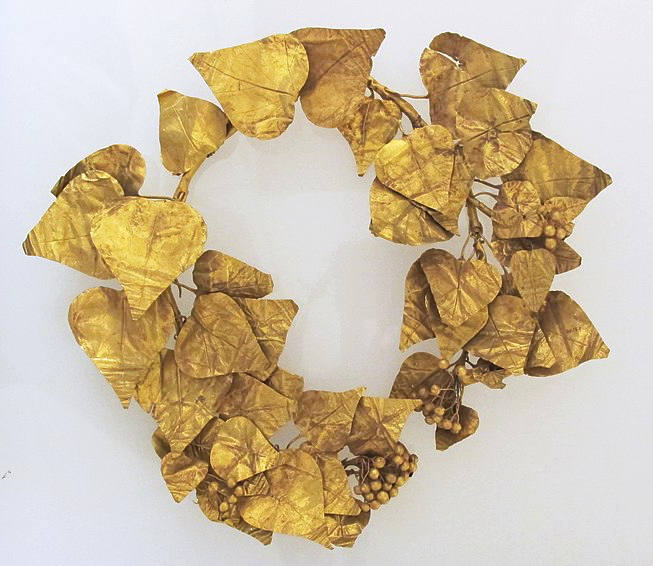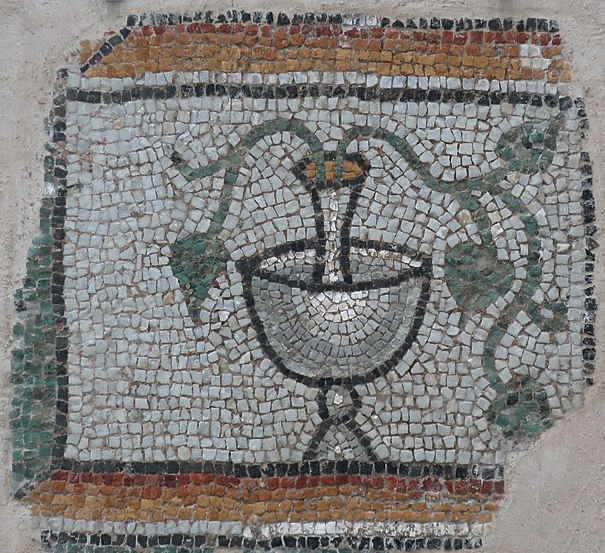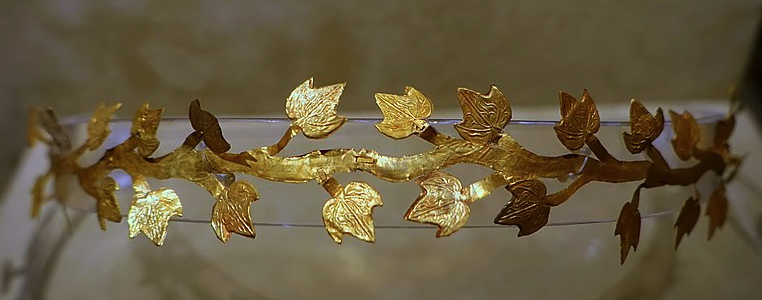
Ivy is a plant that has been around for centuries and has been used for many purposes.
It is a climbing plant that can attach itself to surfaces using aerial rootlets. This characteristic has given rise to many of the plant’s symbolic meanings, including clinging to what is important, being tenacious and never giving up.
Ivy is also considered to be a symbol of eternal life because it keeps growing and thriving even in the harshest conditions.
It has been used in many different cultures for a variety of purposes.
In ancient Greece, ivy was used in wreaths to celebrate the god Dionysus.

The Romans believed that ivy had the power to protect against evil spirits.
In the Middle Ages, ivy was often used in decorations and as a symbol of Christmas.
Today, ivy is still used as a decorative plant and is often found in wedding arrangements and other floral displays.
Ivy and Dionysus / Bacchus
In Francoise Strachan’s Natural Magic, we read:
“Ivy was sacred to Bacchus, the god of wine and revelry, however it has diverse powers which could be unreliable if they are not handled with great care and knowledge.”
In ancient Greece, ivy was associated with the god Dionysus. Dionysus was the god of wine, fertility, and pleasure. He was usually depicted with ivy in his hair or around his neck.

Ivy was thought to bring fertility to the land and was often planted around vineyards. It was also used in religious ceremonies to honor Dionysus.
Ivy was considered a symbol of new life and was often used in decorations at celebrations.
Today, ivy is still associated with Dionysus. It is often used as a decoration in bars and restaurants that serve wine.
Ivy and Aphrodite
The ivy plant is also associated with the goddess of love, Aphrodite.
According to one origin myth, Aphrodite was born from the sea foam that surrounded the severed penis of Uranus.

The ivy plant is often used as a symbol of love and fertility. It is said to be able to increase the fertility of women and to promote the production of breast milk.
In addition, the ivy plant is also thought to be a symbol of protection.
Ivy Leaves in Roman Art
The leaves of ivy plants have been used as symbols of fidelity in Roman art for centuries.
In particular, the leaves have been used to symbolize the fidelity of marriage, as well as the fidelity of other types of relationships.
The leaves are often depicted in art as being intertwined with other symbols of fidelity, such as hearts, doves, and keys.

The use of ivy leaves as symbols of fidelity can be traced back to ancient Roman mythology. In one story, the god Jupiter was caught in a compromising situation with the goddess Juno. To protect himself, Jupiter turned himself into a zephyr, or a gust of wind. Juno was so impressed by Jupiter’s loyalty that she transformed the zephyr into an ivy plant.
Since then, ivy leaves have been seen as symbols of fidelity and everlasting love. They are often used in art to represent the strength of a relationship, and the commitment that two people have to each other.

